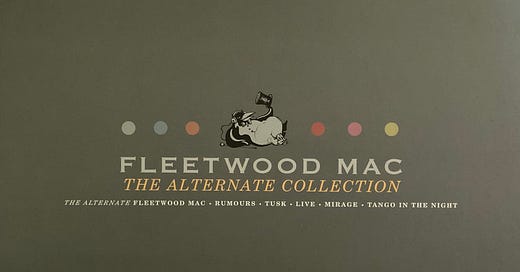Fleetwood Mac and Music History
Fleetwood Mac was always playing when I was a little kid. Whether on the radio, or the adults’ record players, Fleetwood Mac was part of the musical tapestry that surrounded my childhood in the 1980s.
My uncle was (and is) a serious audiophile with an encyclopedic record collection. Through him, I learned about Fleetwood Mac’s previous incarnations with Bob Welch, Danny Kirwan, Jeremy Spencer and the legendary Peter Green. I still remember when he played the 1973 Buckingham Nicks album for me. Frozen Love has been seared into my mind and soul ever since.
A wide variety of artists have formed my musical education: Jimi Hendrix, Black Sabbath, The B-52’s, Siouxsie and the Banshees, David Bowie, Burt Bacharach, Nina Simone and many others, but Fleetwood Mac has a special place for me, perhaps because it’s not just music I enjoy, but music I share with my family. They were part of the sound that was simply always there and that we all enjoyed.
Stevie Nicks and Lindsey Buckingham are both among my biggest influences, but a deep dive into the Mac reveals that they are part of a much larger legacy. The history of Fleetwood Mac is a microcosm of rock history in general as it grew out of the blues and formed various branches: psychedelic, prog, glam, metal, alternative… the Mac is ancestral to all these genres.
Since the passing of the magnificent Christine McVie, I’ve been listening to the Mac a lot and digging deeper into their history than I have before. Some of the musical gems I’ve found along the way are like buried treasures, hidden for decades behind what’s “popular.”
I hope to share some of the gems I’ve found with you and also some of the fascinating connections between artists and genres that I’ve discovered. You simply can’t do a deep dive into Fleetwood Mac’s history without coming away with a deeper understanding of our musical history and the deep connections between seemingly disparate artists and genres.
Be blessed,
Mathew


